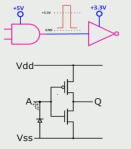For the past year, [Adam] has been working full-time on developing a low-cost x-ray system for developing nations. He has more than 3,500 hours into the project. A few months ago, we announced the 2015 Hackaday Prize, with a theme of, ‘build something that matters.’ A low-cost x-ray would certainly matter to the two-thirds of the world’s population that does not have access to medical radiography, making this project a great entry for The Hackaday Prize.
[Adam]’s portable x-ray system consists of an x-ray tube encased in an epoxied, 3D printed enclosure filled with dialectric oil. This tube is tucked away inside a beautiful case with just a single 12VDC input and an easy to understand user manual. This is just very high voltages and x-rays, nothing [Adam] hasn’t handled (safely) before. The real trick is in the imaging, and for this, [Adam] is using a phosphor screen to turn that x-ray exposure into something visible, an off the shelf x-ray sensor, and a prism to adapt the sensor to the phosphor screen.
The results are incredible. After taking a few pictures of what he had on hand, [Adam] can see the bond wires inside the microprocessor of a calculator. That’s more than sufficient for medical imaging – the goal of the project – and cheap enough to send it to the far-flung reaches of the planet.
Continue reading “Hackaday Prize Semifinalist: Low Cost Radiography”
























